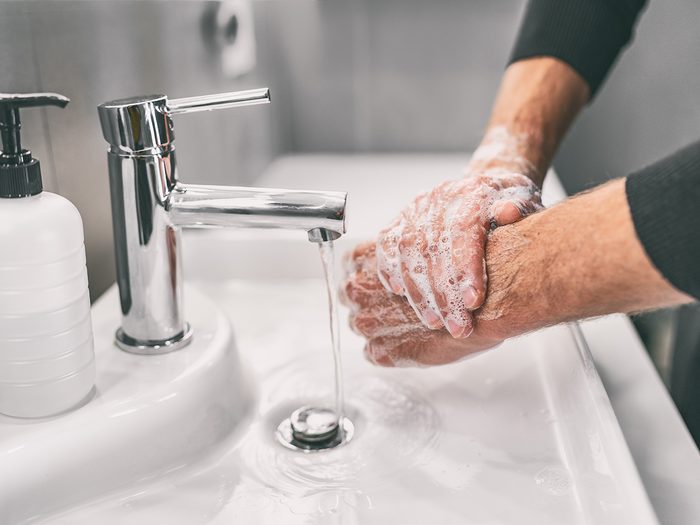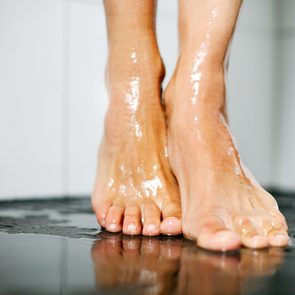This is the Most Hygienic Way to Dry Your Hands

Yes, drying your hands is just as important as washing them.
When it comes to keeping infectious diseases at bay, washing your hands really does go a long way. However, you probably didn’t know that drying your hands can be just as important as washing them.
“After washing your hands, it is so crucial that you dry your hands thoroughly,” Nesochi Okeke-Igbokwe, MD, a physician and health expert says.
Wet hands easily transfer or pick up germs. You could drip bacteria-infected water—and anything wet hands touch could become contaminated, according to David Cutler, MD, a family medicine physician at Providence Saint John’s Health Center in Santa Monica, California. Bacteria is more likely to transfer from wet skin than from dry skin.
Some research shows there is a superior drying method
After you’ve taken the 20 to 30 seconds to wash your hands, it’s important to ensure they’re fully dry. “One goal is to ensure that you do not re-contaminate the hands with bacteria in the process of washing or drying the hands,” Okeke-Igbokwe says. So if you have the option to dry your hands with paper towels, cloth towels, or an air-dryer, it’s more important to choose one rather than leave your hands to air dry. However, some research shows there is a superior way to dry your hands—with paper towels.
According to research from Mayo Clinic, electric air hand driers actually have the potential to spread bacteria by blowing the pathogens right back onto your hands after washing, Okeke-Igbokwe explains. “Using hand dryers in public restrooms is the worst way to dry your washed hands,” Dr. Cutler says. “Hand dryers pose risks especially to young people whose face may be at the nozzle level and breathe in the bacteria or get injured by the heat.” Another study from Westminster University found the most powerful hand driers can spread a virus up to one and a half metres (almost five feet) across the room. Although some experts still debate this topic, drying your hands with a clean, single-use hand towel may be the safer choice to reduce the risk of spreading germs, according to Okeke-Igbokwe.
Bottom line: Always dry your hands
The least-safe option is not drying your hands at all. Ranekka Dean, the Director of Infection Control at NYU Winthrop Hospital in Long Island notes that studies on each drying method have strengths and weaknesses, but as long as your hands are completely dry you’re making a healthy choice. “The decision to use a specific drying method may be determined by several factors, including practicality, personal preference, cost, space, and availability.”
Next, check out the bathroom mistakes you didn’t know you were making.






